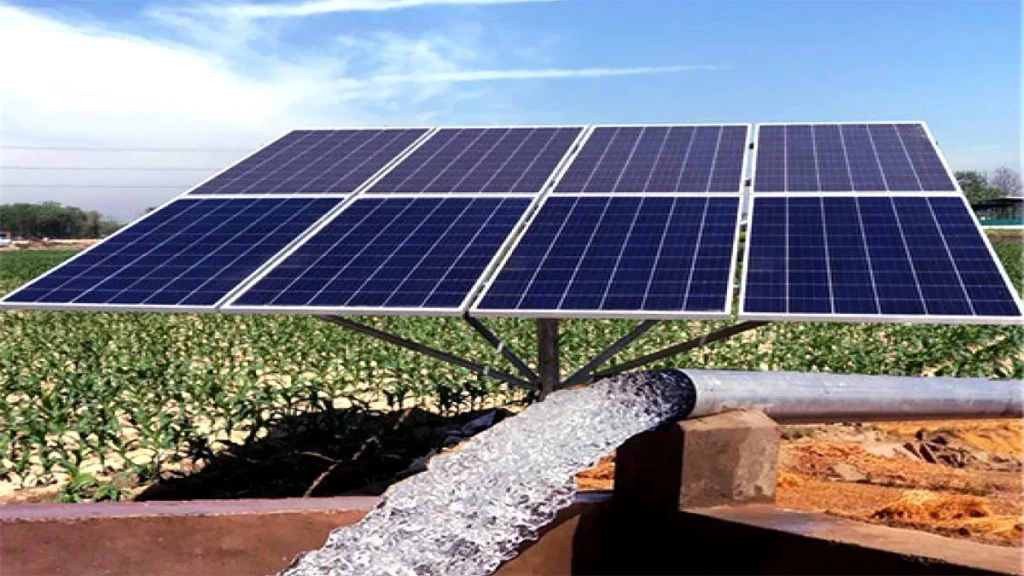Context:
According to a recent report from the Centre for Science and Environment (CSE), The Pradhan Mantri Kisan Urja Suraksha evam Utthaan Mahabhiyan (PM-KUSUM) scheme has achieved only 30% of its targets as of 2024, raising concerns about its ability to meet the 2026 deadline.
More on the News
- The scheme aims to establish grid-connected solar power plants and solar pumps with a total capacity of 25,750 MW by the end of 2024, benefiting 20 million farmers nationwide.
- This report contains findings of surveys conducted in Haryana, Punjab, Rajasthan and Chhattisgarh.
Key Findings of the Study
- Most of the implementation has taken place under Component B, while Components A and C have seen minimal implementation.
- The availability of solar-powered agriculture pumps has enabled farmers to irrigate their fields during the day, reducing their reliance on diesel and grid electricity.
- However, the scheme faces several challenges, including the lack of financial viability for farmers and the non-availability of varying pump capacities in different regions.
- One of the key challenges is the availability of cheap electricity for farmers which leads to a lack of incentive to shift from electric water pumps to solar water pumps.
Recommendations of the study:
- To address these challenges, experts recommend a decentralized implementation model where implementing agencies with on-ground knowledge of farmer demographics and needs can cater to farmers’ needs more effectively.
- Additionally, increasing the Central financial assistance, subject to different states’ needs or prices of solar modules.
About PM-KUSUM Scheme
- Launched: March 2019
- Objectives: To promote solar energy in the agriculture sector.
- Nodal Ministry: Ministry of New and Renewable Energy (MNRE)
Components:
- Component A: Setting up of 10,000 MW of Decentralized Grid Connected Renewable Energy Power Plants on barren land up to the capacity of 2MW.
- Component B: For Installation of 17.50 Lakh stand-alone solar agriculture pumps.
- Component C: For Solarisation of 10 Lakh Grid Connected Agriculture Pumps.
Central Financial Assistance(CFA)/State Government Support:
- Component-A: Procurement Based Incentive (PBI) of 40 paise/kWh or Rs. 6.60 lakhs/MW/year (whichever is less) for the first five years by MNRE to DISCOMs for purchasing power from farmers and developers, ensuring financial support for renewable energy initiatives.
Components B and C:
- CFA of 30% of the benchmark cost or the tender cost, whichever is lower. State Government subsidy 30%; Remaining 40% by the farmer.
- In North Eastern States, Sikkim, J&K, Himachal, Uttarakhand, Lakshadweep and A&N Islands, CFA of 50%, State Government subsidy 30%, Remaining 20% by the farmer.
- Providing farmers with the option to pay upfront costs in installments can make the scheme more financially viable for them.
Way forward:
Despite the challenges, the PM-KUSUM scheme remains a crucial initiative in promoting sustainable agriculture and reducing carbon emissions. By addressing the implementation issues and increasing financial support, the scheme can achieve its targets and benefit millions of farmers across India.

